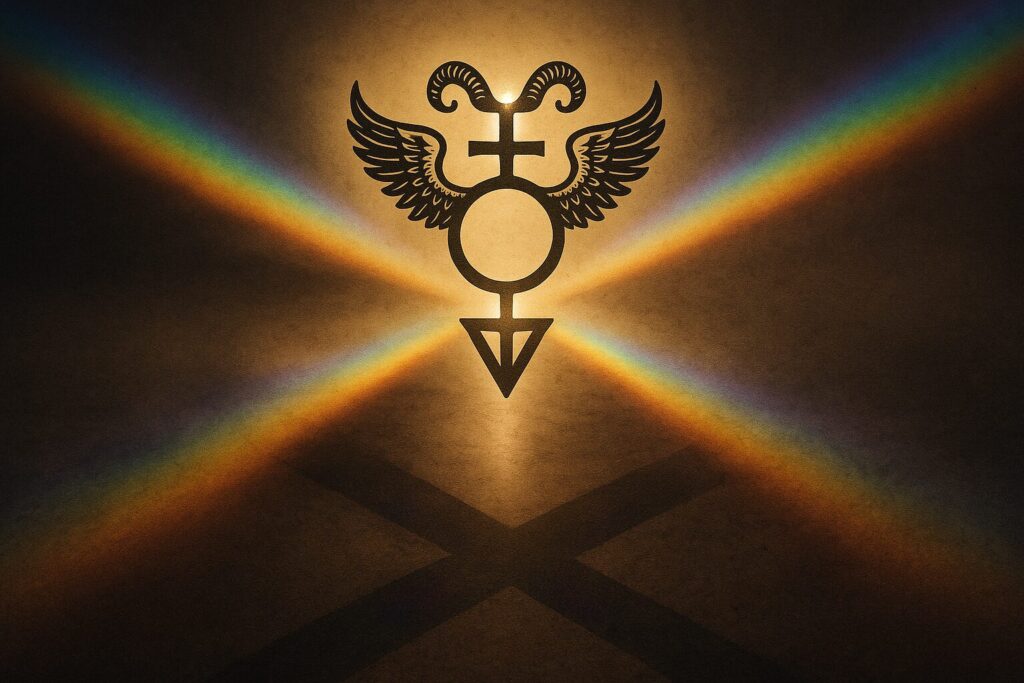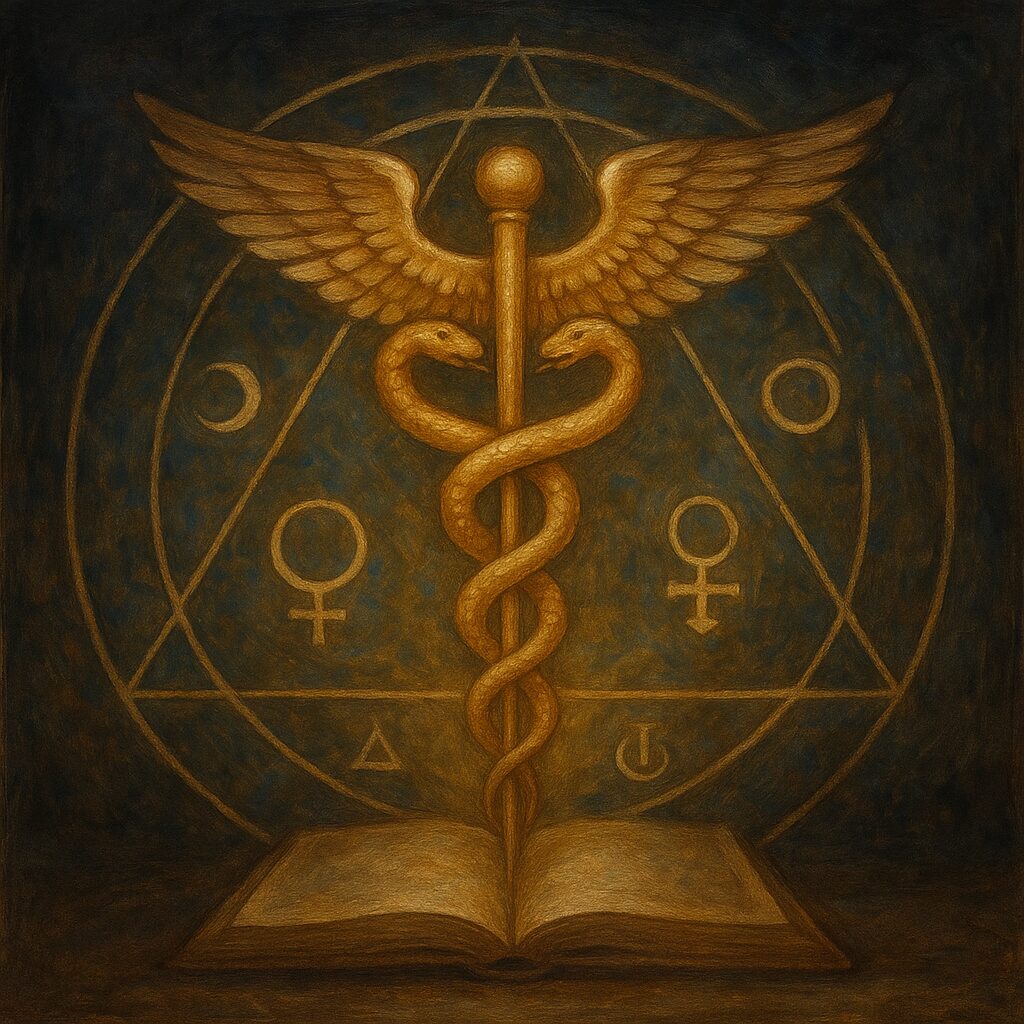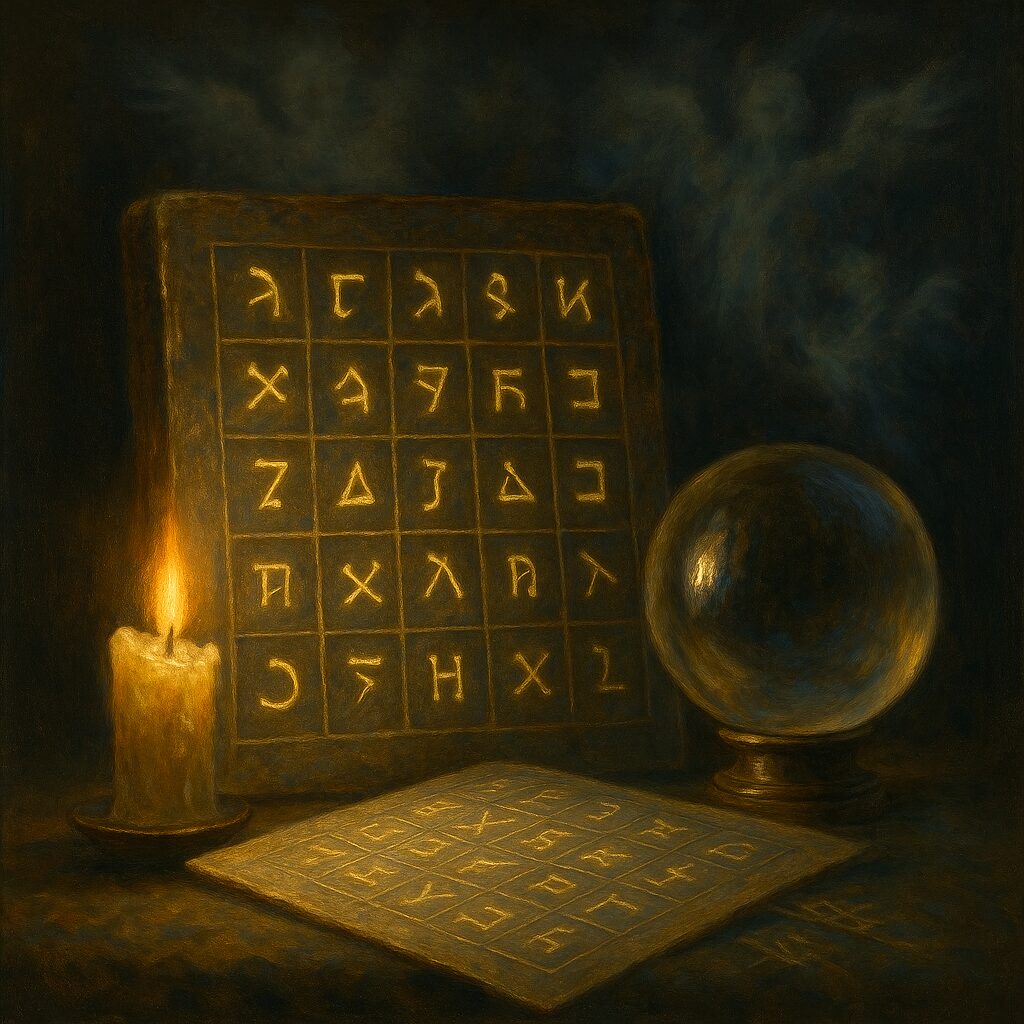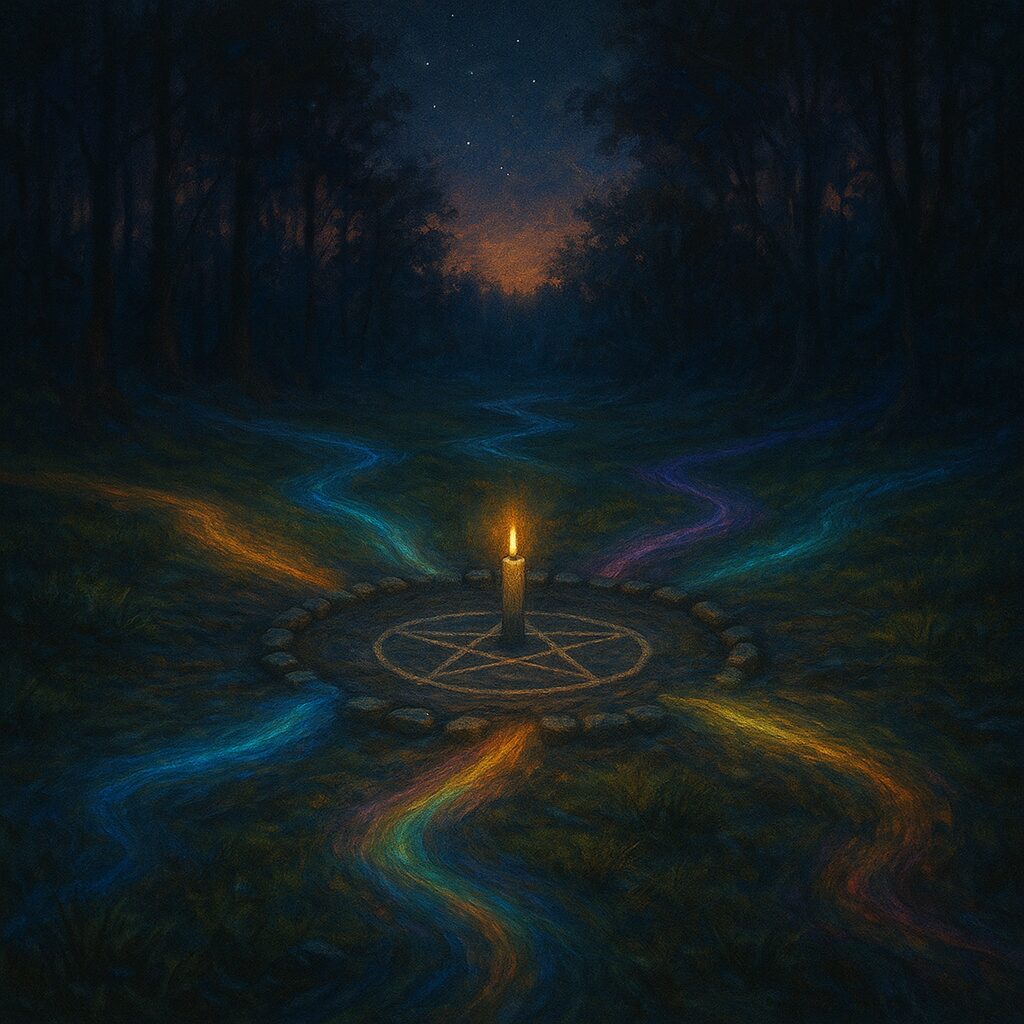The Wider Web of the Craft

Modern Pagan Witchcraft did not descend whole from antiquity, nor spring from a single vision. It was a synthesis—an imaginative weaving together of surviving fragments, revived philosophies, and the enduring human desire to sacralize the natural world.”
— Ronald Hutton, The Triumph of the Moon

Modern Witchcraft and Wicca stand upon a meeting ground of many traditions. They are not ancient survivals copied intact from the past, but living systems—reborn through the study, intuition, and practice of countless seekers who drew wisdom from the world’s older mysteries. Some of those mysteries were formal philosophies; others were rural crafts, charms, and ways of working the land. Together, they form a lineage of spirit and symbol that continues to evolve.
To understand the Craft fully, it helps to see where its language came from: the Hermetic philosophers who spoke of divine correspondence; the Kabbalists who mapped the flow of creation; the Thelemites who sought the sacred will; the angelic magicians of the Renaissance; and the alchemists who turned the work of the furnace into a mirror for the soul. These traditions are not the same as Witchcraft, yet their ideas helped shape its modern expression—offering metaphors, symbols, and methods that still find life in our circles today.
What unites them all is the belief that the universe is participatory—that spirit and matter reflect one another, and that human beings can consciously work with those patterns through devotion, study, and will. In this, Witchcraft and Wicca become part of a greater conversation stretching across centuries. By studying where these ideas arose, we gain perspective: not to imitate, but to understand how magic itself has always been an evolving dialogue between cultures, languages, and seekers.

Hermeticism: Mind of the All
At the dawn of Western esotericism stands the figure of Hermes Trismegistus, a mythic sage said to unite the wisdom of Egypt and Greece. The writings attributed to him—collected under the name Hermetica—taught that the cosmos is a living mind, and that humanity reflects that same divine intelligence in miniature. From this came the famous principle: “As above, so below.”
Hermeticism is less a religion than a philosophy of correspondences. It teaches that all levels of existence mirror one another: stars and stones, gods and people, spirit and matter. To know one plane is to glimpse another. This worldview profoundly influenced later magical orders, alchemists, and mystics who sought harmony between thought, nature, and divinity. The Hermetic adept aimed not merely to summon powers, but to understand the structure of creation and participate consciously within it.
Modern Witchcraft and Wicca inherited this sense of pattern and participation. When we cast the circle and call the quarters, we are invoking a Hermetic idea—that the elements and directions are not abstractions but reflections of a greater cosmic balance. When we speak of polarity, of the dance between God and Goddess, light and shadow, we echo the Hermetic search for unity within duality.
Yet the Witch’s approach differs in tone: where Hermeticism often sought mastery through intellect and ascension, Witchcraft grounds that wisdom in the body and the land. It brings the “above” into the “below,” finding the divine not in transcendence, but in touch, season, and cycle. In this way, the Hermetic heritage lives on in the Craft—not as dogma, but as a philosophy of harmony between the seen and unseen worlds.

Kabbalah: Tree and the Flow
Kabbalah, meaning “receiving” in Hebrew, is the mystical heart of Judaism—a vast contemplative system that seeks to understand how the Infinite (Ein Sof) manifests within creation. It is not a single book or doctrine but a living tradition of study, prayer, and disciplined meditation reaching back to the Middle Ages and beyond. Its central symbol, the Tree of Life, describes ten Sefirot—luminous spheres through which divine energy descends from unity into form, and through which humanity may ascend again toward understanding.
Through the Renaissance and into the modern era, some of these ideas were reinterpreted by non-Jewish philosophers, magicians, and occultists, giving rise to what became known as Hermetic Kabbalah. This version blended the Tree of Life with astrology, alchemy, and Christian mysticism, eventually influencing magical orders such as the Golden Dawn—and, by extension, the symbolic language of Wicca and modern witchcraft.
Within Witchcraft, echoes of Kabbalistic thought appear not as formal theology but as pattern. The Tree’s structure of ascent and descent resonates with the witch’s own cycle of energy: raising power, shaping it, and returning it to balance. The triadic pillars of severity, mercy, and equilibrium reflect the Craft’s eternal movement between light and dark, will and compassion, goddess and god. The Kabbalistic notion that the divine flows continuously through all things mirrors the witch’s understanding of magic as relationship—a living current rather than an external command.
Still, this wisdom must be approached with care. True Kabbalah is sacred within Judaism, rooted in Hebrew language, scripture, and centuries of practice. The Hermetic and Wiccan adaptations are tributaries, not replacements. To study them respectfully is to acknowledge that we are visitors to another’s temple—learning from its light, yet keeping our feet in the garden of our own Craft.

Thelema: Will and the Star
In the early twentieth century, the magician and writer Aleister Crowley articulated a spiritual philosophy he called Thelema—from the Greek word for will. Building on Hermeticism, Kabbalah, and ceremonial magic, Crowley taught that every person has a True Will, a purpose or current aligned with the creative flow of the universe. To know and fulfill that True Will is to live in harmony with one’s own divine nature. His central axiom, “Do what thou wilt shall be the whole of the Law. Love is the law, love under will,” captures this ideal: freedom guided by love, not by ego or chaos.
Thelema, like the Craft, affirms the sacredness of individual experience. It rejects blind obedience and insists that spiritual authority begins within. Yet it differs in temperament: where Witchcraft often expresses this autonomy through the rhythms of nature and the interplay of divine polarity, Thelema explores it through the ascent of consciousness and the symbolic union of star and soul. Both paths seek integration of the higher and lower self—one through cosmic vision, the other through embodied practice.
Modern Wicca owes indirect debts to Thelema. Some early Wiccan figures, including Gerald Gardner, were familiar with Crowley’s ideas and rituals, though Wicca reshaped them toward a gentler, nature-centered ethos. Thelema’s emphasis on sacred will became, in Wicca, an ethic of intent: the understanding that every spell, every circle, begins with deliberate purpose aligned to love and balance.
For witches today, Thelema reminds us that true power arises not from domination but from clarity of direction. To know one’s will is to steer one’s magic toward meaningful ends. In this light, “Love under Will” becomes the witch’s own credo of harmony—will tempered by compassion, freedom balanced by responsibility, and the shining of the inner star reflected in the shared work of the circle.

Enochian Magic: Language of Angels
In the late sixteenth century, the scholar John Dee, astrologer to Queen Elizabeth I, and his medium Edward Kelley claimed to receive a new revelation: a celestial language and system of magic communicated by angels. Through crystal-gazing and intricate tables of symbols, they recorded what became known as the Enochian system—so named because its angelic speech was said to descend from the language once spoken by the biblical Enoch. It blended Renaissance astrology, Christian mysticism, and an almost mathematical precision of ritual, forming one of the most complex bodies of Western ceremonial magic.
Enochian magic later influenced the Golden Dawn and other occult orders, and through them found a subtle echo in modern esoteric practice. It offered an architecture of the invisible world: hierarchies of spirits, elemental “watchtowers,” and calls or keys that opened gateways between planes. Some of these images—especially the four watchtowers of Air, Fire, Water, and Earth—entered Wiccan ritual language, transformed into the circle’s quarter calls that honor the balance of the elements. Yet while the Craft retains the poetic shape, it softens the theology; where Dee sought angelic command, the witch seeks elemental partnership.
For witches, Enochian ideas serve best as metaphor and inspiration rather than literal system. They remind us that language itself is magical—that words can open or close the gates of awareness. But the full Enochian corpus demands rigorous study and is not easily integrated into nature-based practice. Its energies are potent and its symbols layered with Christian cosmology that may not align with Wiccan worldviews.
Approached with respect, however, it offers a glimpse into how Renaissance magicians conceived communion with the unseen: through geometry, vibration, and sacred speech. To the modern witch, this becomes a lesson in clarity and caution—speak with purpose, honor what you invoke, and remember that every word, like every spell, shapes the worlds it touches.

Alchemy: Fire of Transformation
Few words in the language of magic carry such weight—or misunderstanding—as Alchemy. To the medieval mind, it was the art of transmutation: the search to purify base metals into gold, to uncover the Philosopher’s Stone, and to reconcile spirit with matter. But beneath the furnaces and retorts lay a deeper truth: every physical operation mirrored an inner process. The alchemist was not merely refining lead, but refining the self—separating the impure from the pure, the dross from the divine spark hidden within.
Across Europe and the Islamic world, alchemy evolved as both practical science and spiritual metaphor. Its language of Solve et Coagula—to dissolve and to rejoin—became the emblem of transformation through trial. The alchemical marriage of Sun and Moon, sulfur and mercury, king and queen, anticipated the witch’s own balancing of polar forces: masculine and feminine, light and dark, intellect and intuition. Where the alchemist tended the furnace, the witch tends the circle—each an act of creation where matter answers spirit’s call.
Modern Witchcraft inherits alchemy’s vision not through its formulas, but through its philosophy. Every spell, every working of the will, is a miniature transmutation: fear into clarity, pain into wisdom, intent into form. In ritual, as in the old laboratories, fire becomes the teacher—symbol of passion and purification, consuming what no longer serves and giving birth to something more refined. The Wiccan Great Work is not the making of literal gold, but the integration of the many selves into wholeness.
In this way, alchemy stands as both mirror and companion to the Craft. It reminds us that magic is not escape from matter but the awakening of its hidden radiance. Transformation begins in the furnace of the heart, and when the witch lights the candle or stirs the cauldron, she continues the same sacred experiment: the making of gold within.

OTHER CURRENTS AND CROSSROADS

Between the great systems of philosophy and the humble paths of folk magic lie many other traditions that have, at times, brushed against the Craft. Some are historical, others modern; each offers insight into how human beings have sought to bridge the seen and unseen.
Rosicrucianism, emerging in seventeenth-century Europe, blended alchemy, mysticism, and early science into a vision of hidden brotherhoods laboring for spiritual renewal. Its imagery—the rose, the cross, the unfolding light—echoes through later occult orders and even modern ritual symbolism. Gnosticism, far older, sought liberation through knowledge (gnosis)—a remembrance of divine origin within matter. In the language of the witch, that same spark is the spirit immanent in all things: the divine not beyond the world, but sleeping inside it.
More recent is Chaos Magic, born in the late twentieth century as a reaction against dogma. It teaches that belief itself is a magical tool—one may adopt or discard symbols at will, shaping reality through focused intent and flexibility of mind. Many witches appreciate its freedom, yet it demands maturity and grounding. Because Chaos Magic can dissolve symbolic boundaries, it can also dissolve the ethical and spiritual anchors that keep a practitioner balanced. Those exploring it should do so with clarity of purpose and a strong connection to self and circle. Power without context can quickly become confusion rather than creation.
Each of these currents demonstrates that magic is not fixed—it adapts to culture, time, and need. The witch stands at the crossroads, drawing from what is useful, discerning what is wise, and remembering that every current—old or new—flows from the same source: the human desire to understand and participate in the sacred patterns of existence.

The Weaving of Paths
Witchcraft and Wicca are living arts—gardens grown from many seeds. Some sprouted in ancient soil, others took root through study and rediscovery. To walk this path is to recognize both inheritance and choice: we draw from what came before, but we shape what grows next.
The systems explored above—Hermetic, Kabbalistic, Thelemic, Enochian, Alchemical, and more—are not our foundations alone, but neighbors in the greater landscape of magic. Each offers a different language for the same pursuit: to know the self, to work with the divine, to transform through love and will. Yet every borrowing carries responsibility. The witch must discern what aligns with her ethics and what belongs to other lineages left respectfully untouched.
At its heart, the Craft remains simple: to live in harmony with the seen and unseen, to seek balance in all workings, and to honor the sacred within every act. We study the stars and the old texts not to escape the world, but to better tend it—to bring insight from the heights back into the hearthfire. Thus the rivers of tradition converge once more in the circle, where the witch stands as student, participant, and guardian of the living mystery.
“Wicca is a religion reborn from many roots. Hermetic, Kabbalistic, and mystical ideas intertwine with ancient earth reverence to create a path that is both old and new, intellectual and experiential, rooted in nature yet reaching for the divine.”
— Vivianne Crowley, Wicca: A Comprehensive Guide
Select a term
Click a term on the left to see its definition and notes.
—
—
Note: Traditions are living lineages. Attributions point to influential texts or figures rather than exclusive origin.

